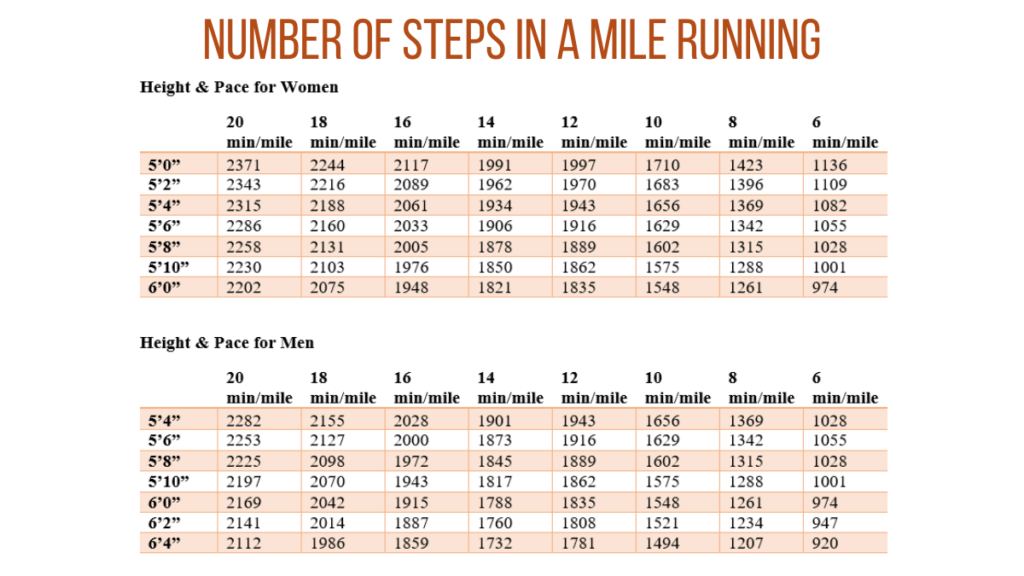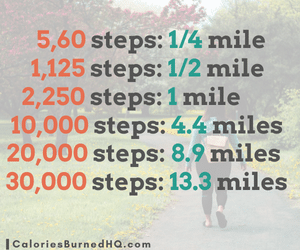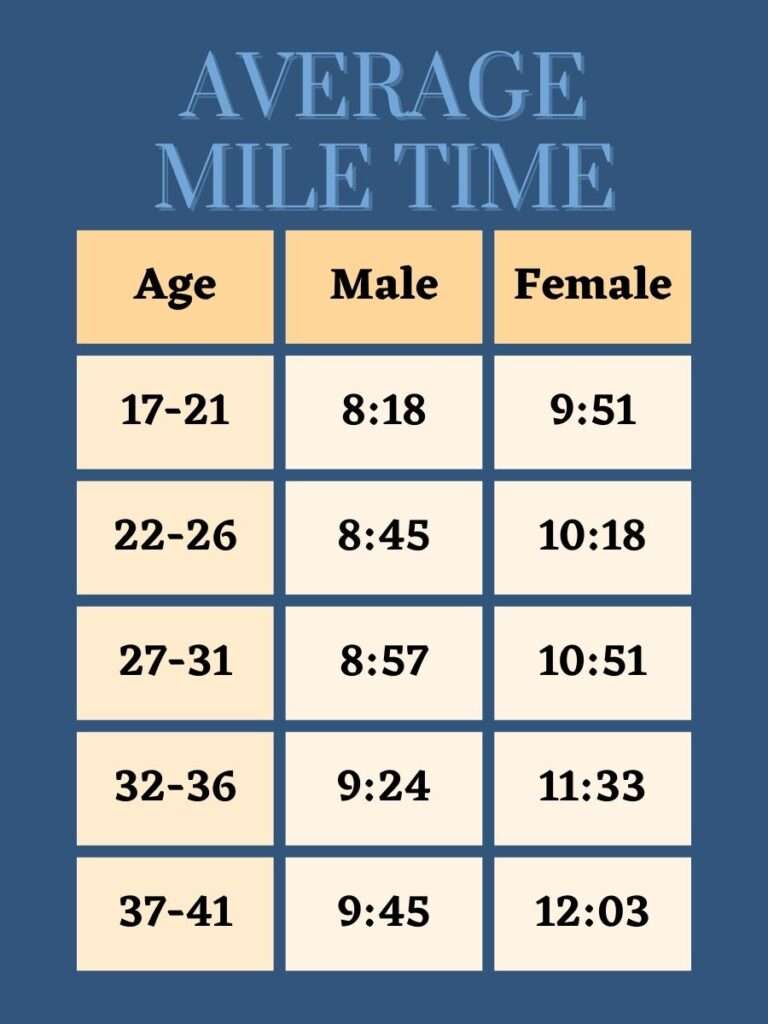When you lace up your running shoes and hit the pavement, have you ever wondered just how many steps it takes to complete a mile? Well, wonder no more. In this article, we will explore the average number of steps the everyday runner takes to conquer that mile. Prepare to be surprised as we unravel the mystery behind the rhythmic cadence of your running stride.
Factors Affecting Step Count
Stride Length
The length of your stride greatly affects your step count while running. Stride length refers to the distance covered with each step you take. It varies from person to person and can be influenced by factors such as height, leg length, and running technique. If you have a longer stride length, you will naturally take fewer steps to complete a mile. Conversely, if your stride length is shorter, you will need to take more steps to cover the same distance.
Running Speed
The pace at which you run also impacts your step count. Generally, as your running speed increases, your step count decreases. This is because when you run faster, your stride lengthens, allowing you to cover more ground with each step. However, it’s important to note that there is a limit to how much your stride length can increase with speed. Eventually, your body reaches its maximal stride length, and any increase in speed will result in an increase in step count.
Terrain
The terrain you choose to run on can have a significant impact on your step count. Running on flat, even surfaces such as roads or treadmills generally requires fewer steps compared to running on uneven or hilly terrain. On hilly terrain, you may need to take shorter, quicker steps to maintain your balance and adjust for changes in elevation. These shorter steps increase your step count per mile.
Running Form
Your running form also plays a role in your step count. Efficient running form involves a smooth and relaxed stride with minimal wasted motion. Good running form helps maintain a steady pace and allows you to cover more ground with each step, resulting in a lower step count. On the other hand, poor running form, such as overstriding or excessive side-to-side movement, can increase your step count as you waste energy and reduce efficiency.
Average Step Count per Mile
General Estimate
On average, a person can take around 1,800 to 2,500 steps to complete a mile of running. This estimate takes into account the factors mentioned above, including stride length, running speed, terrain, and running form. However, it’s important to note that individual variability can cause the step count to differ from person to person.
Gender Differences
Research suggests that there may be slight differences in step count between men and women. Generally, men tend to have a longer stride length compared to women due to inherent biological and physiological differences. As a result, men may take fewer steps to cover the same distance compared to women. However, it’s essential to remember that this is a general observation, and there can still be substantial individual variation within each gender.
Fitness Level
One’s fitness level can also influence step count. Individuals who are more physically fit tend to have better running efficiency and endurance, allowing them to cover more distance with fewer steps. Regular training, including strength and cardiovascular exercises, can improve running economy and efficiency, leading to a reduction in step count.
Running Style
The running style or technique employed by an individual can impact their step count as well. Runners who adopt a more forefoot or mid-foot strike pattern tend to have a shorter stride length compared to those who land on their heel. Therefore, forefoot or mid-foot strikers typically take more steps to cover a mile. Additionally, the running style can be influenced by factors such as running shoes, foot mechanics, and personal preferences.

Methods to Measure Step Count
Fitness Trackers
Fitness trackers are wearable devices specifically designed to monitor various aspects of your fitness, including step count. These devices typically use accelerometers or gyroscopes to detect and record your movement. Some popular fitness trackers include Fitbit, Garmin, and Apple Watch. Aside from step count, fitness trackers can also provide additional data such as distance covered, calories burned, and heart rate.
Smartphone Apps
Smartphone apps offer a convenient and accessible way to track your step count while running. There are numerous apps available for both iOS and Android devices, such as Strava, Nike Run Club, and Runkeeper. These apps utilize the built-in sensors on your smartphone to measure and record your steps. Many also offer additional features like GPS tracking and audio cues to enhance your running experience.
Foot Pods
Foot pods are small devices that attach to your shoe and measure your step count and cadence. These devices use accelerometers or other motion sensors to detect your foot movement and translate it into step count data. Foot pods are typically wireless and can be synced with various fitness devices or smartphone apps. They provide accurate and real-time step count information to help you monitor your running progress.
Running Watches
Running watches, also known as GPS watches, offer comprehensive tracking features, including step count. These watches use GPS technology to accurately measure distance and speed, which allows for a more precise calculation of step count. Running watches often come loaded with advanced features like interval timers, heart rate monitoring, and training plans to help you improve your running performance. Popular brands include Garmin, Polar, and Suunto.
Importance of Tracking Steps
Monitoring Fitness Progress
Tracking your step count is an excellent way to monitor your overall fitness progress. By regularly recording your steps, you can observe patterns and trends over time. Increasing step count or maintaining a consistent level of steps can indicate improvements in cardiovascular fitness, endurance, and general physical activity levels. It provides a tangible measure of your progress and can be motivating to see the numbers increase as your fitness improves.
Setting Goals
Having a step count goal can be a powerful motivator and guide your running routine. Whether you aim for a specific number of steps per day, week, or month, setting goals helps create structure and focus in your training. It gives you something to strive for and can be an effective way to ensure you stay consistent with your running habits. Setting realistic and achievable goals can also boost your confidence and sense of accomplishment as you work towards them.
Preventing Injuries
Tracking your step count can help you identify any sudden increases or changes that may lead to overuse injuries. Gradually increasing your step count over time allows your body to adapt and become stronger. With step count data, you can monitor your progress and ensure you are not overexerting yourself, which can lead to issues such as stress fractures, tendinitis, or muscle strains. By keeping an eye on your steps, you can take proactive measures to prevent injuries and stay healthy.
Motivation and Accountability
Tracking your step count can serve as a source of motivation and accountability. Knowing that your steps are being recorded can help push you to lace up your running shoes and get out the door. By monitoring your progress, you can see the effort you’ve put into your runs and use it to stay motivated and committed to your fitness goals. Additionally, sharing your step count with others, whether through social media or fitness challenges, can help create a sense of accountability and camaraderie.

Tips to Increase Step Count
Gradual Progression
When aiming to increase your step count, it’s important to do so gradually to avoid overuse injuries. Gradual progression allows your body to adapt and become more efficient. Start by adding a small percentage of extra steps to your daily runs, such as 5-10%. As your body adjusts, gradually increase the number of steps over time. This method helps prevent excessive stress on your muscles and joints and allows you to build endurance and strength.
Intervals and Sprints
Incorporating intervals and sprints into your running routine can significantly increase your step count. By alternating between periods of high-intensity running and recovery, you engage different muscle groups and increase your overall movement. Intervals and sprints can be done on a track, on the road, or even on a treadmill. They help elevate your heart rate, burn more calories, and improve your cardiovascular fitness while boosting your step count.
Hill Training
Running uphill requires more effort and shorter, quicker steps, resulting in an increased step count. Incorporating hill training into your routine helps build leg strength and anaerobic capacity. Find a hilly route or use a treadmill with an incline feature to challenge yourself. Running uphill engages your glutes, quads, and calves, providing a full-body workout and increasing your step count due to the added effort required to overcome gravity.
Strength and Flexibility Exercises
Improving your overall strength and flexibility can contribute to more efficient running and increased step count. Incorporating exercises like squats, lunges, and calf raises can strengthen the muscles involved in your stride, allowing for longer and more powerful steps. Additionally, stretching exercises for your lower body, such as hamstring stretches and hip flexor stretches, can help improve your range of motion, reduce muscle tightness, and promote a more fluid running motion.
Impact of Running Surface on Step Count
Treadmill vs. Outdoor Running
Running on a treadmill generally results in a higher step count compared to outdoor running. This is because treadmills have a belt that moves under your feet, forcing you to take each step while the surface remains stationary. As a result, you need to lift your feet slightly higher and bring them forward to keep up with the belt, leading to a slightly increased step count. Conversely, outdoor running allows for natural variations in terrain and doesn’t require the same lifting motion as the treadmill.
Pavement vs. Trail Running
Pavement running and trail running can also impact step count differently. Pavement provides a consistent, smooth surface, allowing for a more efficient stride and fewer steps. On the other hand, trail running involves varied terrain, such as rocks, roots, and uneven surfaces, which requires more frequent adjustments in stride length and foot placement. This frequently changing terrain can increase your step count as you adapt your steps to the obstacles and varying surfaces.
Natural vs. Synthetic Surfaces
When running on natural surfaces like grass or dirt, you may experience a slightly higher step count compared to running on synthetic surfaces like track or artificial turf. Natural surfaces tend to have more irregularities and unevenness, necessitating shorter, quicker steps to maintain balance and stability. Synthetic surfaces, on the other hand, offer a more consistent and predictable running experience, allowing for longer, more efficient steps.

Measurement Challenges and Variability
Inaccurate Equipment
When tracking step count, it’s essential to be mindful of the accuracy of the equipment used. Fitness trackers, smartphone apps, foot pods, and running watches vary in their accuracy and reliability. Ideally, using multiple devices or comparing data from different sources can help mitigate inaccuracies and provide a more accurate measure of your step count. Additionally, regularly calibrating and updating your devices can ensure they provide the most precise data possible.
Variability in Human Strides
There is a significant amount of variability in human stride lengths and running techniques. Even for the same individual, stride length can differ throughout a run or from day to day due to factors like fatigue, terrain, and speed. This variability can result in variations in step count, even for consistent running efforts. Understanding and accepting this inherent variability can help you focus on overall trends in your step count rather than being too fixated on day-to-day fluctuations.
Individual Differences
Each person has unique biomechanics, body proportions, and running styles that can influence their step count. Factors such as leg length, hip mobility, and muscle strength can all affect the length and efficiency of your stride. Individual differences in fitness level, genetics, and running experience can also impact step count. It’s important to recognize that comparing your step count to others may not always be an accurate or fair representation of your own fitness or running ability.
Environmental Factors
Environmental factors can also influence step count. Variables such as wind, temperature, humidity, and altitude can affect your running effort and efficiency. For example, running in windy conditions may require more effort, resulting in a higher step count. Similarly, running in extreme temperatures or at high altitudes can impact your energy expenditure and alter your running form, potentially affecting step count. Being aware of these external factors can help you interpret and make sense of your step count data.
Step Count and Calorie Burn
Relationship Between Steps and Calories
Step count and calorie burn are closely linked. The number of steps you take directly impacts the number of calories you burn while running. With each step, you engage various muscles in your legs and core, increasing your energy expenditure. The more steps you take, the more calories you burn. However, the relationship between step count and calorie burn is not linear and depends on several factors, including intensity, duration, and individual characteristics.
Calculating Calorie Expenditure
Calculating the exact number of calories burned during a run can be challenging due to individual variability and numerous factors at play. Various equations and formulas have been developed to estimate calorie expenditure based on factors like body weight, speed, and distance. Fitness trackers, smartphone apps, and running watches often offer built-in algorithms that use these formulas to provide estimates of calorie burn. However, it’s important to remember that these estimates can be rough approximations and may not be entirely accurate for everyone.
Impact of Intensity and Duration
The intensity and duration of your run play a crucial role in calorie burn. Running at a higher intensity, like during sprints or interval training, increases the demand on your muscles and cardiovascular system, resulting in a higher calorie burn. Similarly, running for a longer duration also burns more calories as your body continues to work over an extended period. It’s important to note that both intensity and duration should be gradually increased to prevent overexertion and injury.

Comparing Running and Walking Step Counts
Difference in Step Length
The fundamental difference between running and walking is the step length. While walking, each step covers a shorter distance compared to running. Therefore, to cover the same distance, you need to take more steps while walking compared to running. On average, the step length during walking is approximately half the step length during running. This means that you would need to take about twice as many steps to cover the same distance while walking.
Energy Efficiency
Running is generally more energy-efficient than walking due to the biomechanics of each movement. While running, there is a period of time when both feet are off the ground, creating a brief moment of flight. This airborne phase reduces the time spent in contact with the ground, resulting in a more efficient use of energy. Walking, on the other hand, always has one foot in contact with the ground, which requires more energy to maintain forward momentum.
Impact on Joint Health
Running typically places more stress on your joints compared to walking, primarily due to the higher impact forces involved. With each running step, your body experiences a ground reaction force that is two to three times your body weight. This repeated impact can lead to joint wear and tear over time. Walking, being a lower-impact activity, places less stress on your joints and is often recommended for individuals with joint pain or those looking for a lower-intensity workout option.
Conclusion
Tracking your step count while running can provide valuable insights into various aspects of your training and fitness. Factors such as stride length, running speed, terrain, and running form all contribute to the number of steps you take to cover a mile. By monitoring your step count, you can gauge your progress, set achievable goals, and prevent injuries. Additionally, understanding the impact of running surfaces, measuring challenges, and the relationship between step count and calorie burn can further enhance your running experience. So, lace up your running shoes, track your steps, and enjoy the many benefits of monitoring your step count during your runs.

